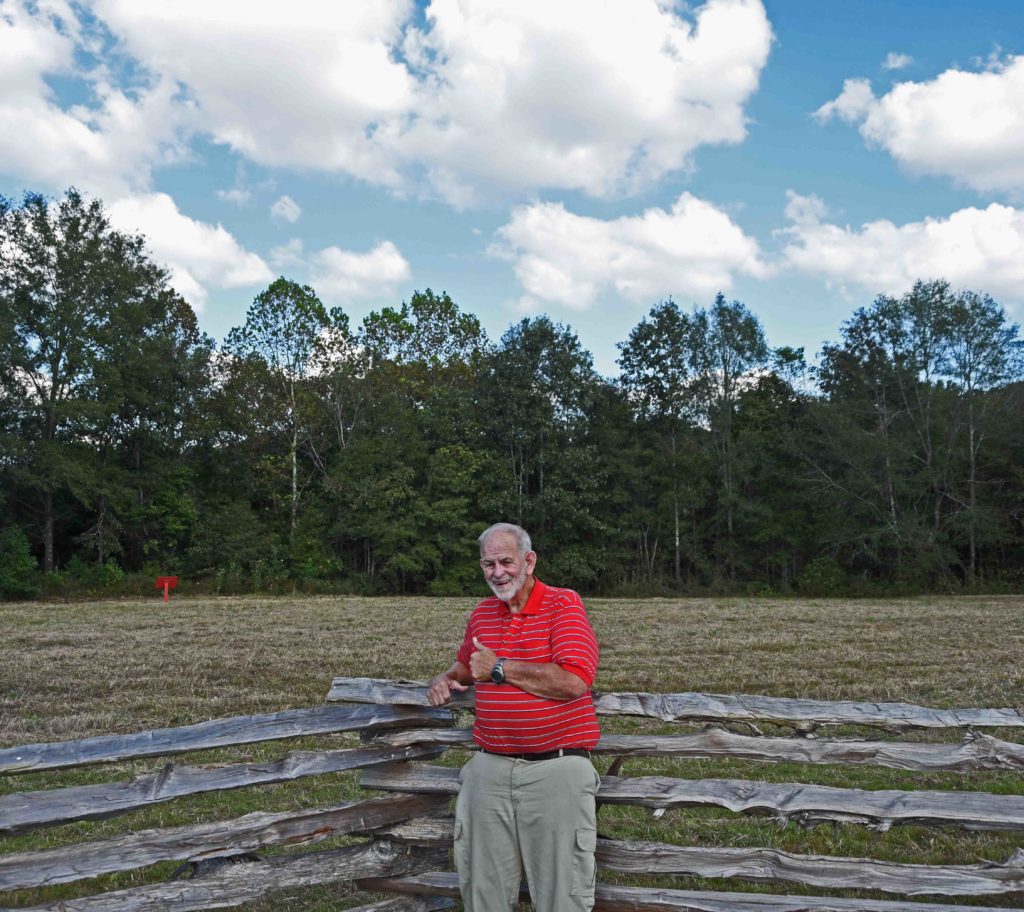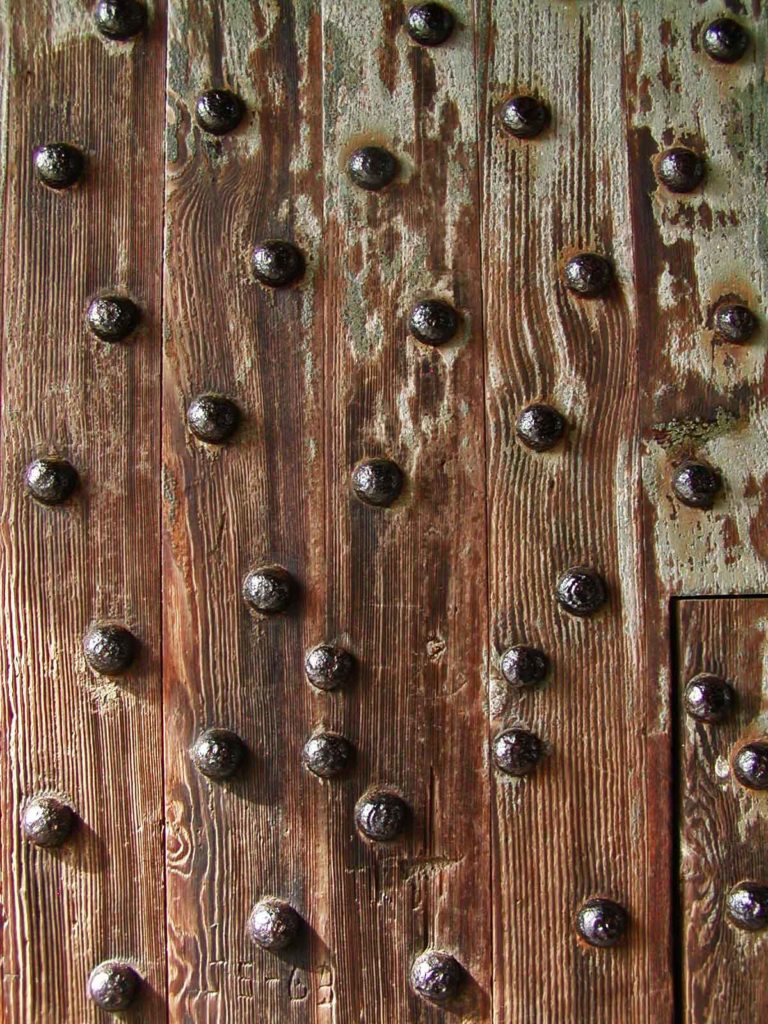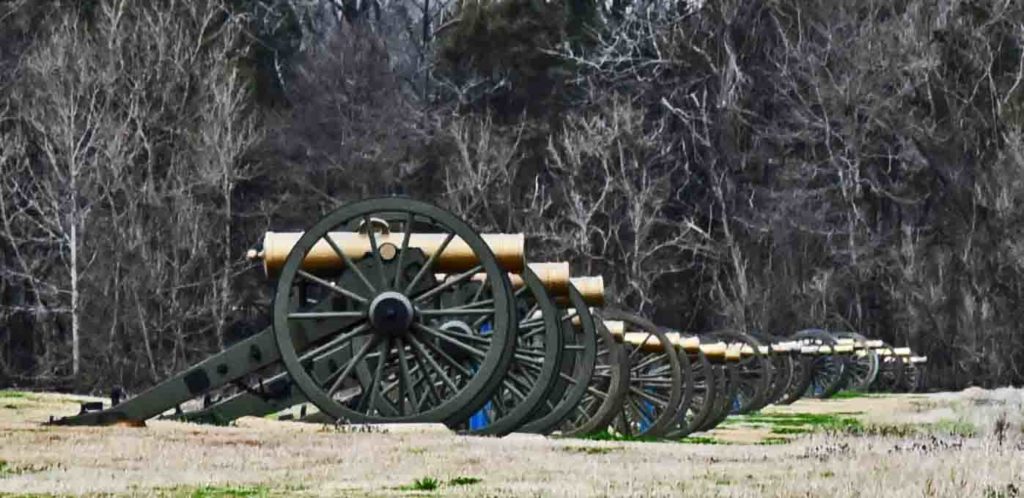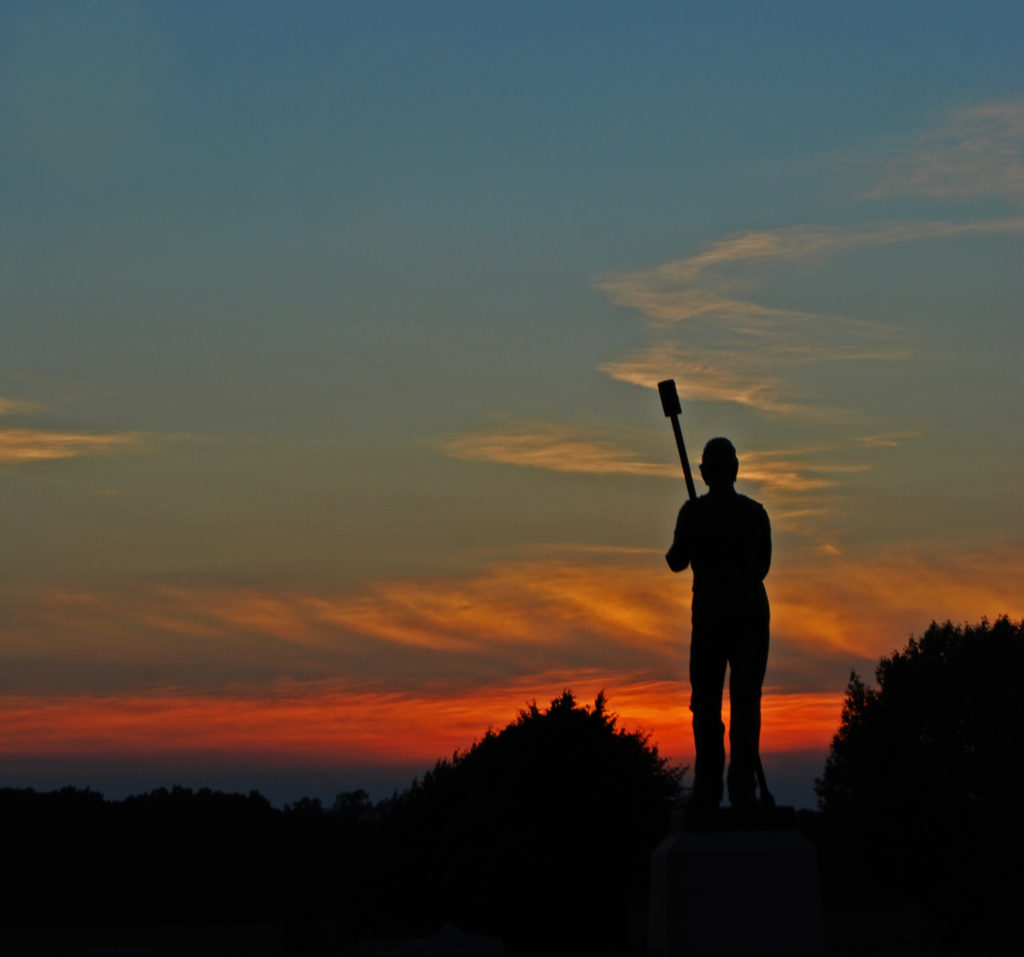
Growing up on the West Coast shaped BGES member Mike Green’s life in ways that are still evident today. Born in Washington, he moved south with his family to California when he was 3. They settled in Redding, also known as Central Valley. Green was a good athlete who loved music and the outdoors. He found himself in a perfect setting to pursue the things he was passionate about.
“I’m an Eagle Scout with a double gold palm, a brotherhood member of the order of the arrow, and was Kitchkinet in the tap-out ceremonies,” Green says. “I hunted most of the time while I was in Central Valley and loaded my own ammo. I was in the band at Central Valley High School, plus I played in the county honor band. I also lettered in football, basketball and track.”
Green was a Civil War buff, too. But like most kids who hail from the West Coast, especially those who came of age when cars were the primary mode of transportation for family vacations, feeding his increasing curiosity wasn’t easy. “Living in California, it was a bit hard to get to Civil War sites,” he recalls. “My first introduction was reading the Bruce Catton books. They got my interest flowing.”

Green maintained that interest as he progressed through school. His first stop after CVHS was Shasta, the local junior college. From there, he moved on to San Francisco State College, where he received his BA in History (Russian and Central European) and Political Science.
“My folks weren’t able to put me through college,” says Green, “so I worked every summer fighting forest fires for the federal government. I started out as a crewman on a tank truck and moved up to driver and finally a fire prevention tech. In 1966-67, I went back to SF State and got my education credential.”
Green would go on to spend 41 years teaching and coaching. “Mostly history,” he says. ”I also coached wrestling, football, basketball, track, and cross country. After I got out of coaching, I started playing music again and ended up in three local symphony orchestras. For a time I was the principal double bass player in each of them.’
Despite his impressive career as a teacher, Green likes to joke that “the only thing that I ever got out of my ED classes was my wife Carolyn.” They met at SF State and were married in 1968. “We have two wonderful girls and both of them are serving their country as teachers,” says Green. “Carolyn was a teacher for 37 years. Most of her career was in language arts in a junior high school.”

After years of reading about the Civil War, Green finally got his first hands-on experience in 1976. “We had a cab-over camper and decided that we would go around the country during the bicentennial,” he recalls. “Our daughter Aimee was 3 at the time. We packed up and drove to the East Coast on the southern route, up to Ticonderoga and then back along the north. In the process we hit a bunch of Civil War sites. That summer was a hot one, and Aimee loved it when we went into a national park visitors center because we always stayed for the movie. It was air-conditioned and she would stretch out and go to sleep.”
For Green, that first Civil War trip whetted his appetite to travel even more broadly. It also provided an introduction to photography, which he learned was a perfect way to capture Civil War history and bring it home with him. Over time, his hobby became a more ardent pursuit. Indeed, many of Green’s photos have won awards. “I have enjoyed photography for a long time but really started doing it seriously after I retired from teaching about 12 years ago,” he says.
As Green’s teaching career progressed, he got involved with the teachers union in California and then moved on to political action committees, including the National Education Association. One of the benefits of being part of NEA leadership was attending conferences around the nation.
“There were meetings in Washington, D.C., four times a year,” says Green. “They usually ended on a Friday night. I wouldn’t fly back until late Sunday so I could visit the battlefields around the area. NEA meetings were held all over the country. If there were battlefields in those areas, I would hit them.”
One of those trips actually landed Green in the hospital with a case of Rocky Mountain Spotted Fever. “I was walking through some grass areas at Vicksburg and picked up a tick that infected me,” he says. “The NEA meeting was in New Orleans, and I ended up in Tulane Hospital with my leg swollen and all kinds of colors”
That episode, however, did nothing to sour Green on traveling. “After I retired, I did a lot, sometimes with my wife and family and sometimes by myself,” he says. “I have been to the Azores (with the symphony), China, England, France, Italy, Germany, Thailand, and Cambodia. The family goes to Kauai every year.”

Of course, Green has also spent considerable time visiting Civil War battlefields. Among his favorites are Antietam, Vicksburg, and Parker Hills. “I have been to and studied all of the major battles of the war multiple times,” he says. “I’ve walked most of them several times. I have also been to most of the minor battlefields as well as the national cemetery at Corinth, Mississippi. I wanted to pay my respects to one of my relations who is buried there.
“If you are looking for a hidden jewel of a field, try Johnsonville in Tennessee,” Green adds. “The visitors center is outstanding and the field itself is very interesting.”
Green’s Civil War travels are also of note because they eventually led him to BGES. “You will have to check with Len,” he says, “but I think I have taken between 30 to 40 tours with the group. Through these programs I have been able to make some great friends. I try to do whatever I can to help out the BGES because it has done a lot for me.”
In the same vein, Green has done a lot for the San Joaquin Valley Civil War Round Table. The group operates out of Fresno and totals about 20 dues-paying members. Green served separate stints as president and vice president, and is currently the treasurer. He has also played a pivotal role in fundraising. In 2018, he received the Jerry L. Russell award for outstanding work with the round tables of the West Coast.
“Any profits that we make on our conferences go directly to civil war preservation,” says Green. “About 12 years ago, we decided to adopt the Friends of Raymond as our primary place to contribute. We like that 100% of our contributions support the battlefield and its interpretation. Raymond is something special because it has artillery lines (22 Union cannons and three confederate cannons) located in the exact place and with the exact replicas of the pieces that were used in the battle at the time.”
Green’s proficiency behind the camera has benefitted Civil War round table members in California as well. “I use my photography to attempt to get people to see what these battlefields look like,” he says. “Many of them will never be able to physically go to these sites.”
Green appreciates the opportunity to be the eyes of Civil War history for those not as fortunate as him. He remembers what those Bruce Catton books did for him. As an award-winning photographer, he sees the bigger picture. “I believe that history must be preserved and studied,” he says. “Otherwise we will unfortunately be required to repeat it.”

You must be logged in to post a comment.